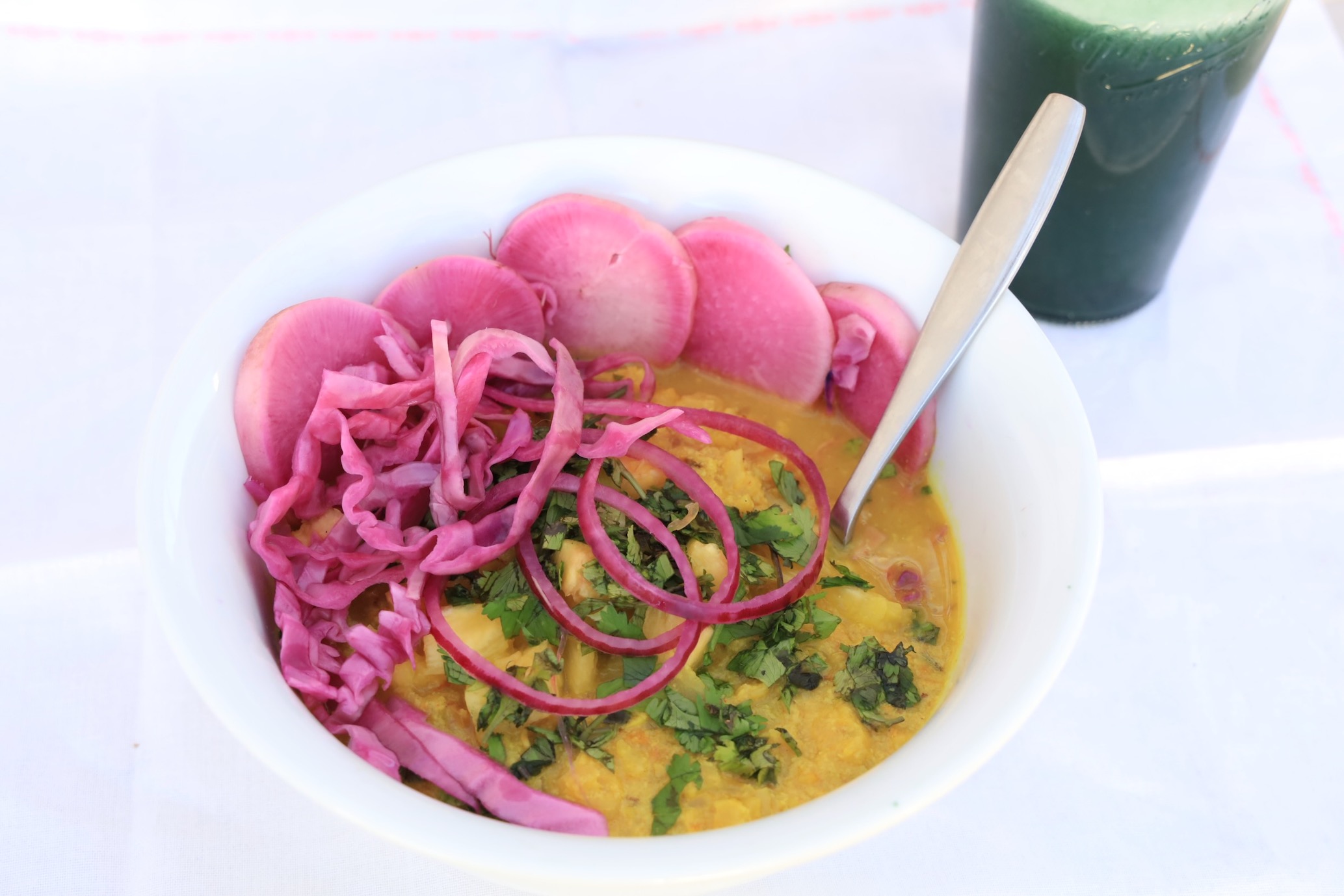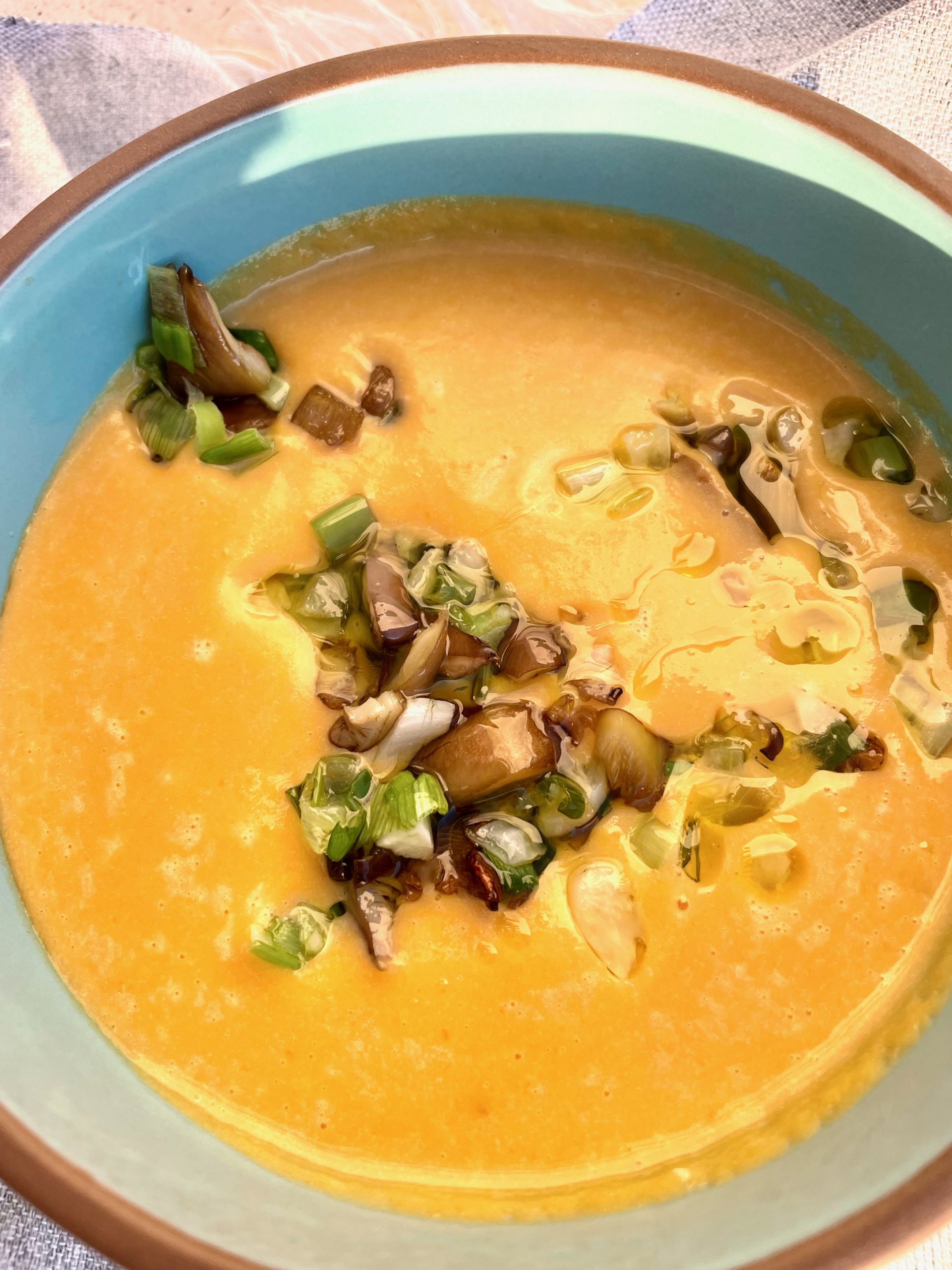Indian food is so delicious, but the execution can be complex. Here is my fast version of a curry with only the use of curry powder. It is a mild and sweet dish so will be loved by children.

Phytochemicals
Why do we eat cauliflower when the only vitamin or mineral it has in any notable amount is vitamin C (11% per cup)? This is because it contains phytochemicals. These are bioactive constituents of plants that have a positive effect on human health and include alkaloids, saponins, tannins, flavonoids and phenolic compounds. The phytochemicals in cauliflower are called glucosinolates.
Glucosinolates

Glucosinolates, a distinctive group of sulfur-containing compounds, are prominently found in cauliflower and other cruciferous vegetables, belonging to the Brassicaceae family. This family includes broccoli, Brussels sprouts, kale, and cabbage, among others. Glucosinolates play a pivotal role in the body’s phase 2 detoxification process within the liver, a critical phase distinct from phase 1 detoxification primarily because it involves the conjugation of toxins. Whereas phase 1 modifies toxic substances, with the enzyme cytochrome P450, by processes of oxidation, reduction, and hydrolysis, phase 2 significantly enhances their water solubility, allowing for easier excretion. The enzymes involved in phase 2 detoxification attach small chemical groups to toxins, which include glucosinolate derivatives, thus making them harmless (less toxic) and water-soluble for elimination. This process is essential for neutralizing and removing a wide range of harmful substances from the body. In fact, sometimes the results of phase 1 detoxification result in more toxic substances. Therefore, imagine a scenario where phase 2 detoxification couldn’t occur: toxins would accumulate to dangerous levels, potentially leading to severe health issues such as toxicity or even cancer, highlighting the critical role of cruciferous vegetables and their glucosinolates in maintaining the body’s natural defense mechanisms.
Glucosinolates play a significant role in plant defense against pests and diseases. In human nutrition, glucosinolates are of interest for their potential health benefits, particularly in the prevention of certain cancers. They are the precursors to isothiocyanates and indoles, compounds that are produced when glucosinolates are broken down by the enzyme myrosinase, which can occur during plant damage (such as chewing) or through food preparation processes. These breakdown products have been studied for their anti-cancer properties, as they are thought to promote the elimination of carcinogens before they can damage DNA and to stimulate apoptosis in cancerous cells.


Yellow Cauliflower Curry
Equipment
- 5 quart stainless steel pan or cast iron
Ingredients
- 1/2 c dried white beans, soaked overnight and cooked till soft The volume will increase after cooking
Spices
- 1/3 c large scallions white parts diced
- 1/3 c coconut oil
- 4-6 garlic cloves
- 3 inches of small diameter turmeric peeled and grated
- 1 in piece ginger peeled and grated
- 1 T curry powder add more for extra spice at the end
Main Ingredients
- 1/2 head cauliflower
- 10-12 ounces coconut milk
- 2 cups diced pineapple
Instructions
Steps:
- Dice onions and begin frying in coconut oil in a medium large saucepan
- Meanwhile dice garlic and add to onions
- Begin chopping cauliflower to a small rough dice and add to the onions
- Cooking over medium heat continue to cook cauliflower as it is chopped and stir frequently.
- When onions and cauliflower are softened through and tinged with brown add in the turmeric, ginger, and curry powder.
- Add in the coconut milk and beans. Add water if you need to for the dish. Simmer for 20 minutes on low heat
- Add in the pineapple once it is chopped towards the end to warm.
- Serve with cilantro, overnight fermented daikon radish and onion and a dollop of yogurt if desired.
Notes








